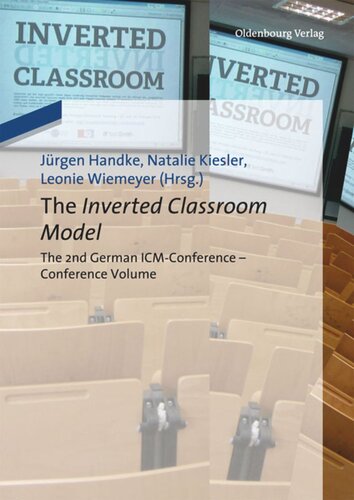

Most ebook files are in PDF format, so you can easily read them using various software such as Foxit Reader or directly on the Google Chrome browser.
Some ebook files are released by publishers in other formats such as .awz, .mobi, .epub, .fb2, etc. You may need to install specific software to read these formats on mobile/PC, such as Calibre.
Please read the tutorial at this link: https://ebookbell.com/faq
We offer FREE conversion to the popular formats you request; however, this may take some time. Therefore, right after payment, please email us, and we will try to provide the service as quickly as possible.
For some exceptional file formats or broken links (if any), please refrain from opening any disputes. Instead, email us first, and we will try to assist within a maximum of 6 hours.
EbookBell Team

5.0
40 reviewsWhen the 1st German Inverted Classroom Conference was staged in 2012, the organizers thought that it may have been the first and last conference of this kind: Too few teachers seemed to be familiar with this model in the first place and only a tiny fragment of them would actually apply this model to their own teaching scenarios. However, in the 2013 conference, we were overwhelmed with a large number of teachers who not only wanted to find out about this teaching and learning concept but had already used it.
Consequently, the focus of the 2nd German Inverted Classroom Conference to which this conference volume is dedicated was no longer the “installation” of the Inverted Classroom Model (ICM) but fine adjustments in the actual application of it.
This is reflected in the contributions to this volume. Even though all three central aspects of the ICM are addressed, (1) content production and delivery, (2) testing, and (3) the in-class phase, there has been a shift away from mere content production towards an expansion of the model as well as a move towards fine adjustments of the three components.
Introduction and elaboration of the central components of the Inverted Classroom Model, discussion of methods leading to a sustainable improvement of teaching and learning at high-school and university level